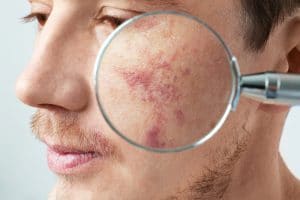
To find an irregular dark spot on your skin can be a little concerning. Most of these spots are harmless and caused by aging, sun damage or even an underlying condition. We want our skin to be smooth and clear, so it’s important to address these spots as soon as they’re detected. Here are some different skin conditions that could be causing your pigmentation irregularity.
Hyperpigmentation
Hyperpigmentation causes patches of skin to become darker than normal due to sun damage, inflammation, acne or any other skin injuries. This occurs when extra melanin, the pigment that produces skin color, forms in pockets on the surface of the skin. This condition isn’t dangerous— but can make someone feel self-conscious about their appearance. Although any skin type can develop hyperpigmentation, those with darker skin tones are more prone.
Solar Lentigines
Commonly referred to as “liver spots,” solar lentigines are irregular, brown spots that appear on the sun-exposed parts of the body. This includes the face, hands, shoulders and calves. The lesions are also harmless and mostly occur on Caucasian people above the age of 40. The best way to prevent solar lentigines is by wearing sunscreen and getting minimal amounts of sun exposure.
Melasma
Melasma is a cosmetic condition that occurs frequently in women in their second or third trimester of pregnancy. Too much sun exposure and when there is a hormonal imbalance of estrogen and progesterone will cause this. Women on birth control, doing hormonal replacement therapy, and going through menopause can also develop melasma. These spots may fade after hormones are rebalanced or after the baby is born, but can also never go away.
Having pigment irregularities and looking for treatment? Schedule a visit with us today at AADermatology.com/Book